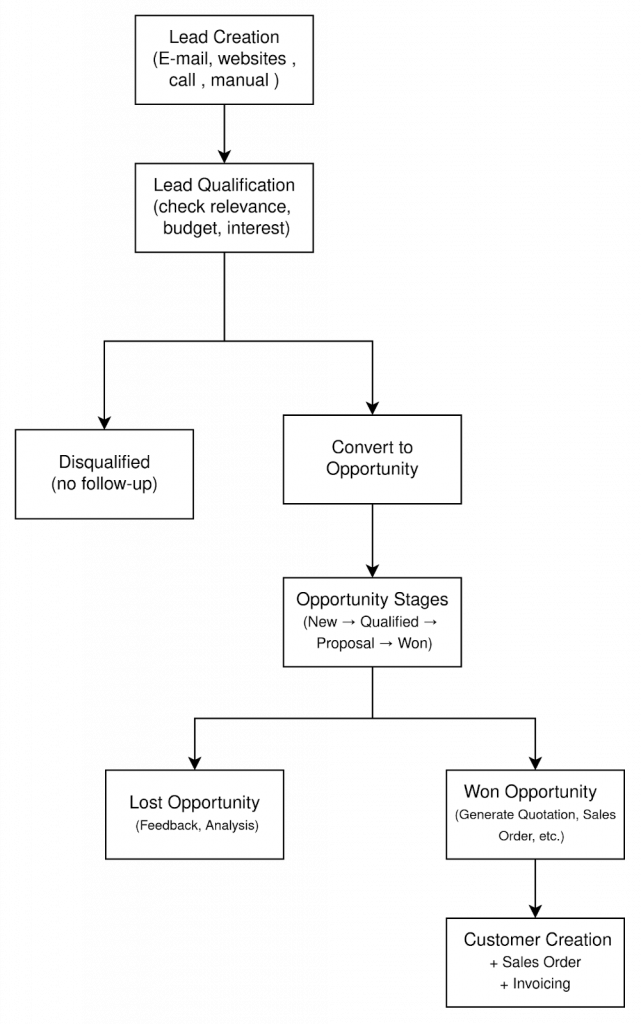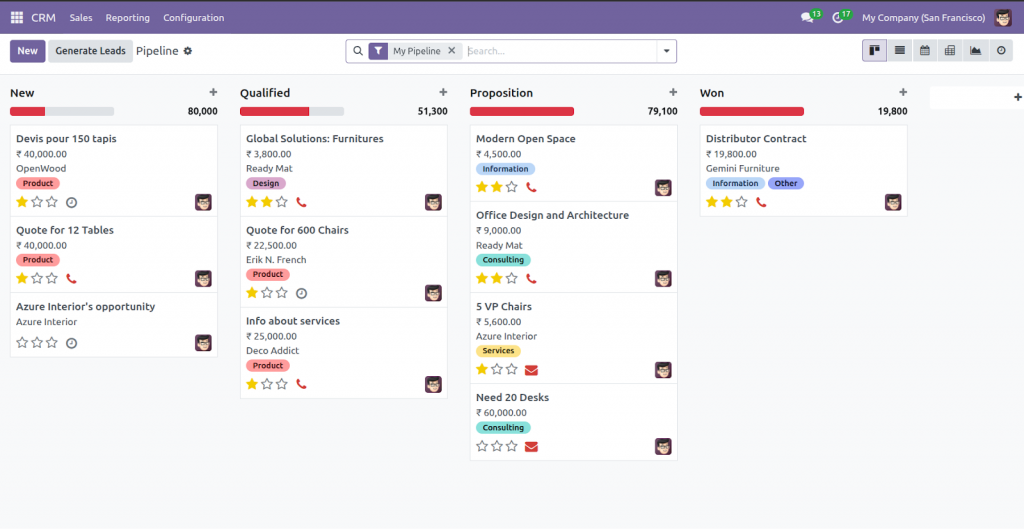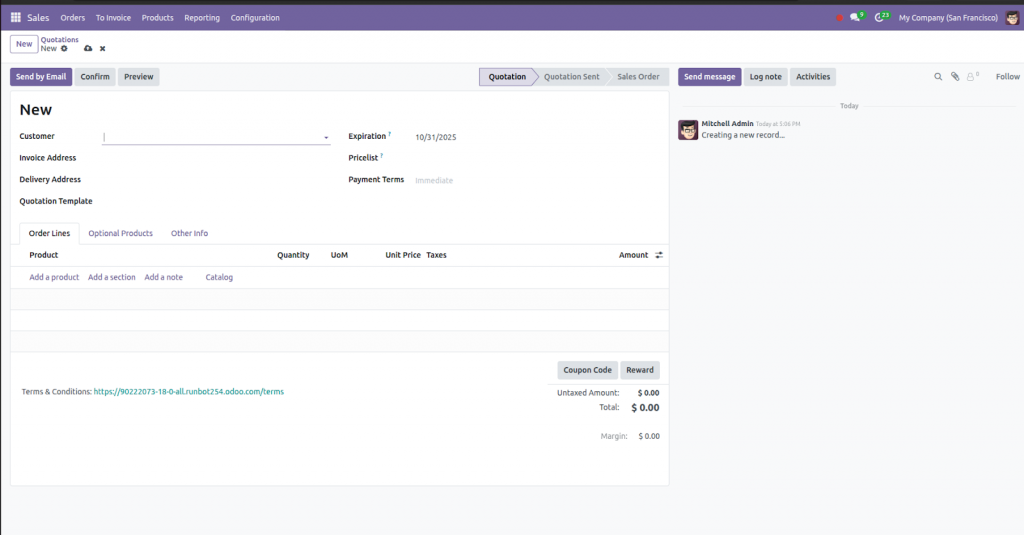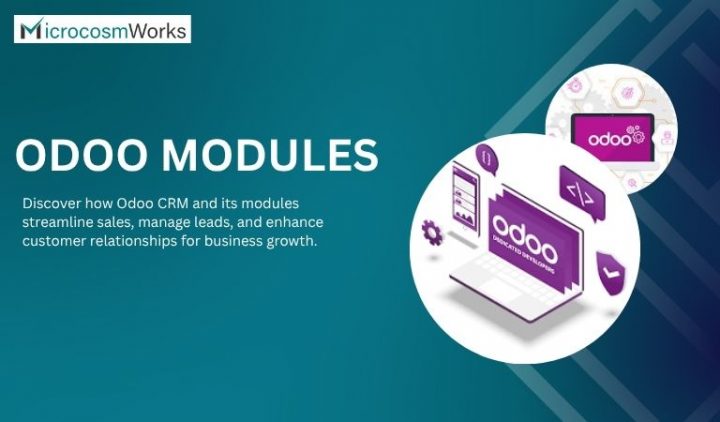CRM Module: Customer Relationship Management
How Odoo CRM Module Boosts Business Growth and Sales
In today’s fast-paced business world, customer relationships are the heart of sustainable growth. Whether you’re a startup or an enterprise, managing leads, tracking opportunities, and building lasting customer relationships can be challenging without the right tools. This is where Odoo modules like CRM, Sales, and Manufacturing shine—providing businesses with powerful, intuitive, and customizable solutions to streamline sales processes, manage production, and drive revenue.
What is Odoo CRM?
Odoo CRM (Customer Relationship Management) is a core module within the Odoo ERP ecosystem. It helps businesses capture leads, nurture opportunities, and convert them into satisfied customers—all within a single platform. The CRM integrates seamlessly with other Odoo applications, such as Sales, Marketing, Invoicing, and Helpdesk, creating a unified experience across the entire customer journey.
Key Stages in Odoo CRM
- Lead Creation – Captured from website, email, or manual entry.
- Lead Qualification – The Sales team evaluates potential.
- Convert to Opportunity – Qualified leads move into the pipeline.
- Opportunity Stages – Managed through Kanban (New → Qualified → Proposal → Won).
- Closing
- Lost → Discard with reason.
- Won → Generate quotation, confirm sales order, create customer.
- Lost → Discard with reason.


Benefits of Odoo CRM for Businesses
- Improved Productivity – Sales reps spend less time on manual tasks and more time closing deals.
- Enhanced Collaboration – Teams can share notes, schedules, and insights in real-time.
- Better Customer Experience – Track customer preferences and history to deliver personalized service.
- Data-Driven Decisions – Use accurate forecasts and performance metrics to make strategic decisions.
- Scalability – Whether you’re managing 100 or 10,000 leads, Odoo CRM scales with your business.
Why Choose Odoo CRM Over Other CRMs?
Unlike traditional CRMs, Odoo offers:
- All-in-one ERP integration – Combine CRM with Sales, Accounting, Inventory, and more.
- Customization – Tailor workflows, fields, and reports to match your unique processes.
- Cost-Effective – Affordable pricing compared to big players like Salesforce or HubSpot.
- Open-Source Flexibility – Freedom to adapt and extend the system as your business grows.
Conclusion
The Odoo CRM module is not just a tool—it’s a growth partner for businesses aiming to strengthen customer relationships, streamline sales pipelines, and boost revenue. By adopting Odoo CRM, companies can empower their sales teams with the right insights and tools to succeed in today’s competitive market.
SALES MODULE
Managing sales efficiently is the backbone of any successful business. Odoo’s Sales module provides a powerful, integrated, and user-friendly solution for handling the complete sales process — from quotations to invoicing.
Key Features of Odoo Sales Module
- Quotations & Estimates
- Easily create professional quotations.
- Customize product descriptions, discounts, and terms to suit your needs.
- With only one click, turn quotes into sales orders.
- Easily create professional quotations.
- Sales Orders
- Manage order confirmations, delivery schedules, and customer contracts.
- Automate workflows by linking orders with inventory and accounting.
- Manage order confirmations, delivery schedules, and customer contracts.
- Product Management
- Handle multiple product types (stockable, service, consumable).
- Manage price lists, discounts, and variants.
- Handle multiple product types (stockable, service, consumable).
- CRM Integration
- Convert leads into opportunities and then into sales.
- Track customer history directly in the sales order.
- Convert leads into opportunities and then into sales.
- Invoicing & Payments
- Generate invoices directly from confirmed orders.
- Integrate with online payment gateways for faster transactions.
- Generate invoices directly from confirmed orders.
- Reporting & Analytics
- Sales performance dashboards.
- Track revenues, top products, and customer activity.
- Forecast sales with predictive reporting.
- Sales performance dashboards.
Flow Diagram – Odoo Sales Process
Customer Inquiry
↓
Quotation
↓
Sales Order
↓
Delivery
↓
Invoice
↓
Payment
Manufacturing Module
The Manufacturing (MRP) Module in Odoo 18 is one of the most powerful tools for companies involved in production and assembly. It helps streamline planning, scheduling, production orders, material requirements, and quality control, ensuring a smooth manufacturing process.
Key Features of Odoo 18 Manufacturing Module
- Bill of Materials (BoM)
- Define raw materials, semi-finished goods, and final products.
- Supports multi-level BoMs for complex products.
- Define raw materials, semi-finished goods, and final products.
- Work Orders & Routing
- Define production steps and assign them to specific work centers.
- Track time and efficiency at each stage.
- Define production steps and assign them to specific work centers.
- Production Orders
- Create and manage manufacturing orders.
- Reserve raw materials automatically.
- Create and manage manufacturing orders.
- Work Centers & Operations
- Monitor machines and labor efficiency.
- Track downtime and optimize capacity.
- Monitor machines and labor efficiency.
- Quality Control
- Set up inspection points.
- Ensure finished goods meet quality standards.
- Set up inspection points.
- Forecasting & Planning
- Master Production Schedule (MPS) for planning.
- Automatically generate work orders based on demand.
- Master Production Schedule (MPS) for planning.
- Integration with Other Modules
- Inventory: Automatic stock updates after production.
- Sales: Make-to-Order production directly from sales orders.
- Purchase: Trigger material purchase when stock is low.
- Inventory: Automatic stock updates after production.
Workflow of Odoo Manufacturing
Here’s the typical manufacturing flow in Odoo:
flowchart LR
A[Sales Order] --> B[Manufacturing Order]
B --> C[Check Bill of Materials]
C --> D[Raw Materials Reservation]
D --> E[Work Orders in Work Centers]
E --> F[Production Completed]
F --> G[Quality Check]
G --> H[Finished Goods to Inventory]Process of Customization of any modules in ODOO
Step 1: Create a custom_module folder
Step 2: Add the path in addons_path in Odoo.conf file
Step 3: Create a module format
custom_module/
│── __init__.py
│── __manifest__.py
│── models/
│ └── custom_model.py
│── views/
│ └── custom_view.xml
│── security/
│ └── ir.model.access.csv
Step 4: Inherit the property of (module) sale.order
According to the requirement
Step 5 : Run server , active developer mode > Update App list > Search module name > install
Read More: Odoo 18 Installation & Setup Guide on Ubuntu | Community vs Enterprise Explained
Read More:- How to install Odoo and OpenEduCat on Ubuntu: A Step-by-Step Guide




